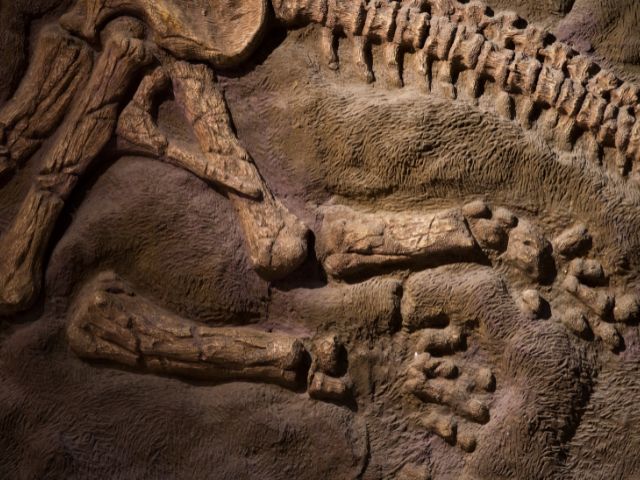[imagesource:canva]
Torrential rains causing historic flooding in southern Brazil earlier this year have revealed a “very well-preserved” dinosaur fossil dating back approximately 200 million years.
First identified in May near the city of Sao Joao do Polesine, about 280 kilometres west of Porto Alegre, this fossil find has been hailed as a significant discovery in a region of the Brazilian pampas often referred to as the country’s ‘El Dorado’ or ‘city of gold’ of palaeontology.
A dedicated team from the Federal University of Santa Maria spent four days meticulously excavating and carefully removing the block of rock containing what they described as a “near complete” dinosaur fossil, transporting it back to their research center for detailed study.
Preliminary analysis has identified the fossil as a member of the Herrerasauridae family. These bipedal carnivores, known for their long tails, roamed the area of what is now Brazil and Argentina during the Triassic period, which spanned from 250 to 200 million years ago.

Rodrigo Temp Muller, the lead researcher, explained that this fossil could be the second most complete Herrerasauridae specimen ever found, with the most complete specimen discovered in the same region of Brazil in 2014. The latter discovery led to identifying a whole new species of dino, gnathovorax cabreirai (try saying that fast five times), which is notable for its hooked claws.
“We have to be very careful with this work; it’s very meticulous, almost surgical,” Muller explained, noting that the process could take “several months.”
He also emphasised the importance of preserving every tiny part of the fossil to ensure no valuable information is lost.
Once their analysis is complete, Muller and co. plan to publish their findings in a scientific journal, contributing valuable knowledge to the field of palaeontology.
The heavy rains that led to the discovery of the fossil had devastating effects in May, resulting in the deaths of over 180 people and causing extensive damage to infrastructure across the pampas.
However, these same rains accelerated erosion processes, bringing the fossil to light much earlier than it might have been discovered otherwise.
Muller acknowledged this unexpected benefit but also noted the drawbacks:
“Heavy rainfall also destroys a lot of the material from the fossils, especially small fragments.”
In light of this, palaeontologists on the scene have to maintain a vigilant watch over fossil deposits, paying particular attention to any fragments that might become exposed.
It’s a bittersweet moment as we think of those lost during the Brazil floods and simultaneously celebrate one of the biggest paleontological discoveries of the century.
[source:iol]





